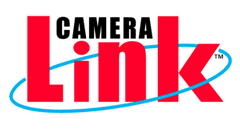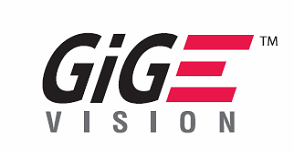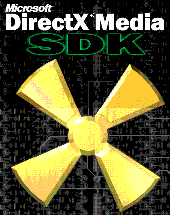Solution
This article discusses the advantages and disadvantages of the four main types of industrial cameras.
Parallel Standard
The parallel interface standard is a well-established standard that provides a wide range of acquisition speeds, image sizes, and pixel depths. Parallel cameras often require users to customize their cables and connectors to suit their framegrabber.
Advantages
- High speed, high pixel depth, and large image sizes
- Easy to configure camera options and other functionality
Disadvantages
- No physical or protocol standard for interfacing with framegrabbers
- Require custom cables and connectors
- Higher cost compared to analog, IEEE 1394, and GigE standards
- Require camera files for using it with NI IMAQ image acquisition devices
Camera Link Standard

Camera Link is a newer interface standard developed by a consortium of framegrabber and camera manufacturers to offer speed and triggering functionality with the ease of standardized cabling. These cameras also require the use of camera files to define how the camera can interact with the framegrabber.
Advantages
- High speed, high pixel depth, and large image sizes
- Easy to configure camera attributes
- Deterministic triggering and timing
- Uniform cabling between participating camera and image acquisition device manufacturers
Disadvantages
- Fewer products currently available
- Higher cost compared to analog, IEEE 1394, and Gigabit Ethernet standards
- Require cameras files for use with NI IMAQ image acquisition
IEEE 1394 (FireWire) Standard

The IEEE 1394 interface standard offers a simple daisy chain cabling system using a standard interface. However, this standard lacks the data throughput capabilities of the parallel standard and the easy-to-use triggering functionality of the Camera Link standard.
Advantages
- Simple cabling
- Lower cost compared to parallel and Camera Link standards
- Does not require camera files
- Supports a variety of frame rates and image sizes
- Supports multiple cameras on a single framegrabber
- Available on PCMCIA cards for laptop usage
- Does not require NI hardware
Disadvantages
- Slower data transfer rate - up to 400 Mbps for 1934a and up to 800 Mbps for 1394b (dependent on camera, IEEE 1394 interface hardware, and operating system support)
- No onboard memory for saving images
- Less triggering support
- Difficult to synchronize with other devices
GigE Vision Standard (Gigabit Ethernet)

The GigE Vision standard defines a method of interfacing with gigabit ethernet-connected cameras. The NI-IMAQdx driver is used to communicate with GigE Vision-compliant cameras.
Advantages
- Simple cabling
- Faster transfer rate than IEEE 1394 (up to 1000 Mbps, dependent on hardware)
- Lower cost compared to parallel and Camera Link standards
- Does not require camera files
- Can be deployed to remote network-connected locations
- Does not require NI hardware
Disadvantages
- Less triggering support
- Difficult to synchronize with other devices
Direct Show (USB 2.0 Cameras)

The Direct Show API was produced by Microsoft for software developers to perform various operations with media streams. The IMAQdx driver, as of Vision 2009, can communicate with Direct Show compliant cameras.
Advantages
- Lowest cost
- Wide selection
- Does not require camera files
- Does not require NI hardware
Disadvantages
- No onboard memory for saving images
- Slower data transfer rate of 480 Mbps for USB 2.0
- Dependent on third party driver
- Triggering support dependent on device and software timing
- Difficult to synchronize with other devices
USB3 Vision

The USB3 vision standard is built on the SuperSpeed USB specification, otherwise known as the USB 3.0 specification. USB 3.0 is managed by the USB Implementers Forum (USB-IF) and offers a 400 MB/s throughput and 4.5 Watts of power (at 5V) to the device.
The USB3 Vision standard defines mechanisms for device discovery and identification, control, and image streaming. Hosted by the Automated Imaging Association (AIA), the global trade association for the vision and imaging industry, USB3 Vision will allow “plug and play” compatibility between a USB3 Vision device and a computer running a standard USB 3.0 interface.
Advantages
- Simple cabling
- Plug and play capability
- High speed, high pixel depth, and large image sizes
- Does not require camera files
- Does not require NI hardware
Disadvantages
- Triggering support dependent on device and software timing
- Difficult to synchronize with other devices